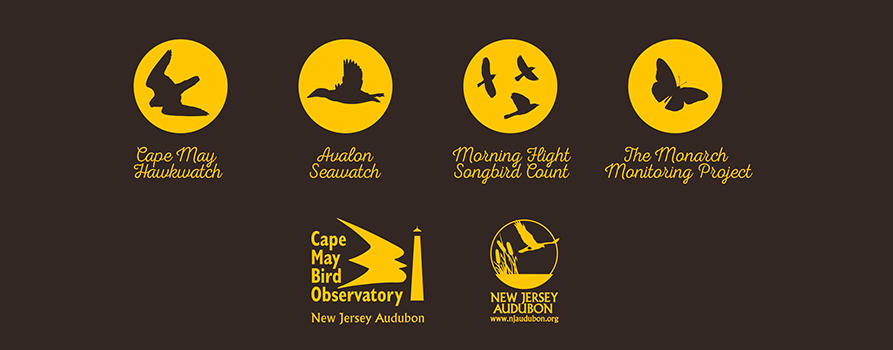Lots of birds were up on the radar last night on moderate NW winds, and another preemptive call for assistance was raised for the count! Just for kicks, I started the count 15 minutes early to see if I could capture any interesting numbers of the late season species that like to do their thing earlier in the morning. The pre-sunrise drive down the winding, wooded road to the dike scored a darn-late Eastern Whip-poor-will, which is a hard bird to find on Cape Island to begin with.
The first few minutes ere surprisingly quiet (unlike the busy kinglet flight on Monday). Texts started coming in on the RBA about sparrows and other birds littering certain streets across Cape Island. Were the birds going to engage in morning flight, or had they all been grounded? I had a feeling the wave would be on its way shortly, and that it was.
Minutes later, some Hermit Thrushes shouted their flight calls from various points across the sky, and soon I was counting several in active morning flight! I may have mentioned before that Catharus thrushes are quite rare in morning flight here in Cape May. Their descent/morning flight typically happens much earlier, and they seem less prone to get up and engage in re-orientation behavior here. So it was a real treat to see them zooming along early this morning!
11 northbound is the highest single day count of Hermit Thrush for the count, and it’s the highest season total (it was previously 9 for both of those; every season total for HETH in the MF dataset has come from just one day, illustrating that Catharus at Morning Flight count are truly a special thing!).
The late-season diversity mixed in with the Yellow-rumps was impressive, as Blackpoll (28) and Palm Warblers (30), Chipping Sparrows (31), Dark-eyed Juncos (91), and more also headed north in the flight. Northern Flickers once again made a late push-- the 504 northbound put us at 4,693 for the season, which is the second-highest flicker total on official record!
We also had *another* mega flight of Eastern Phoebes, surpassing even Monday’s outstanding flight. We had 285 north past the count today, and we are now 631 for the season (the previous season high was 166)! A solid kinglet flight (194 Ruby-crowned, 63 Golden-crowned) occurred as well, and we are having a Top 3 season for both species, with the potential for more!
On the boreal front, we had a great day for Purple Finches, with 330 northbound! This shatters the previously all-time season high of 1,486 from 2010 and puts over 1,600! Wow! Red-breasted (51) and White-breasted Nuthatch (21) were also flying in solid numbers, and we are having a Top 3 flight for them as well. This October truly has been a banner month for landbird migration on a lot of levels!
Interestingly, there have been very few Blue Jays in morning flight past the count since the end of September when there was a significant push of them that has since seemed to taper off. Maybe they’re all hanging out at our backyard feeders (certainly many are enjoying our well-stocked feeders). For bonus diversity, an Orange-crowned Warbler, 2 Black-throated Green Warblers, a Baltimore Oriole, and 2 Yellow-billed Cuckoos, were all wonderful to see. We also had another Vesper Sparrow, which is another season high count (even though it’s just 4!).
Many thanks to Brett Ewald, Erik Bruhnke, Adehl Schwaderer, and Jerald Reb for the notable assistance and great company on the dike this morning! Tomorrow morning will have winds out of the NE and should still be interesting, but an offshore storm coming in that afternoon will bring strong east winds and rain this weekend. However, a front is lining up nicely for October 30-31, which is historically a great time for American Robins!
As always, you can find our official count totals on Trektellen here, and our complete eBird checklist of the day’s observations here.






















